
Rediscovering Japan

Rediscovering Japan
Travel (Hakodate Part 2 (Motomachi/Funamichou Area))

by tomizuta
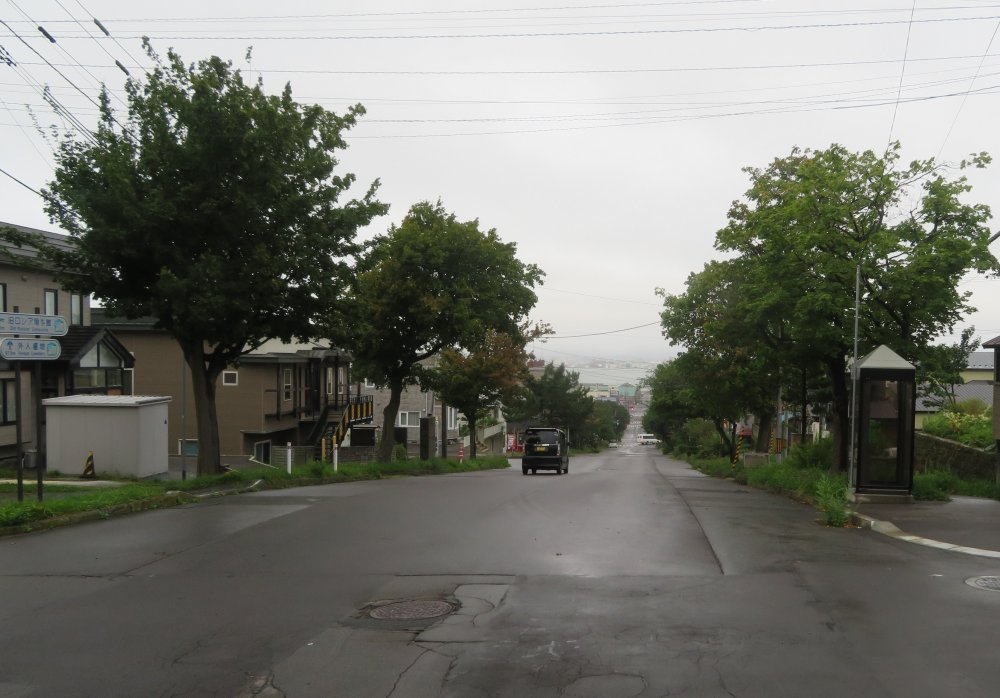
View of Hakodate Bay from Saiwaizaka Slope. No wonder the Tokugawa Government was concerned about possible attack from the bay.
The site of the Orthodox Church of Hakodate is where the Russian Consulate was established in 1860 after the port of Hakodate was opened and before the Meiji Restoration. The first church was constructed on site in the same year. I understand that the church underwent many difficulties as the ban on Christianity was not fully lifted till twenty or more years later, the Japan-Russia War of 1904-1905 and then the great fire in 1907. The current Byzantine style church was built in 1916. I must confess that I didn't know until this visit that the Orthodox Church is independent of The Russian Orthodox Church and was supported by the Orthodox Church in the US especially in the early Soviet years. We briefly visited the beautiful church which is open to the public.
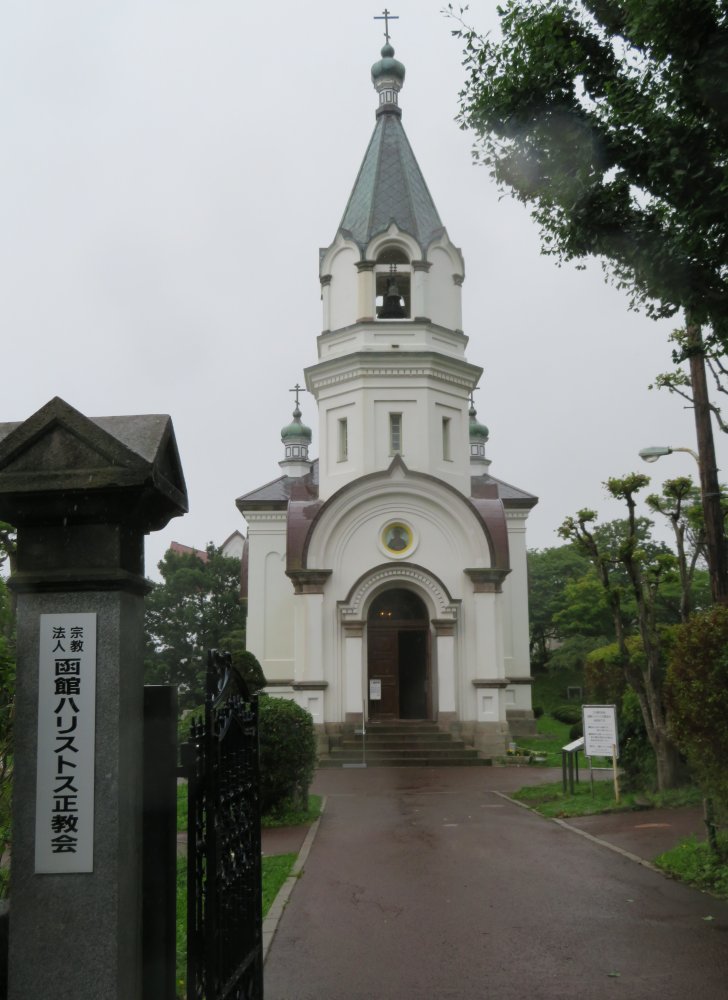
Looking down towards the bay from the top of Hachimansaka. Hakodate has many such wide slope roads to prevent the spreading of fire.
We went past the Anglican St. John's Church which was shut. I understand that originally the church was situated close to the former British Consulate but relocated to this site in 1921. The current church is a modern building completed in 1979.
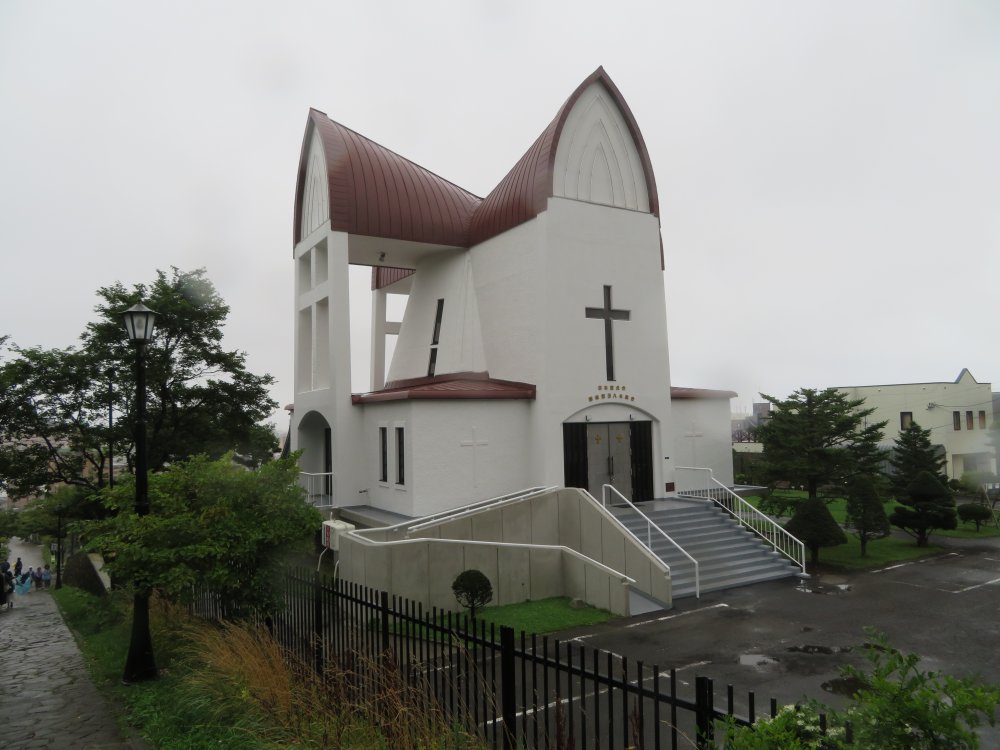
I understand that originally the church was situated close to the former British Consulate but relocated to this site in 1921.
We next paid a visit to the Catholic Motomachi Church nearby. The first catholic missionary from France came to Hakodate in 1860. He resided close to the French Consulate set up in Shoumyouji Buddhist Temple in Yayoi now relocated further west in Funami. His successor constructed a temporary church on the current site in 1867 regarded by the catholic church as the second church. An official church was built in 1877 but lost in the great fire of 1907. It was rebuilt but lost again in the fire of 1921 after which the current church was built in 1923. The church was one of the earliest post Tokugawa catholic churches to be founded alongside Nagasaki and Yokohama. We briefly entered the church which is open to the public.
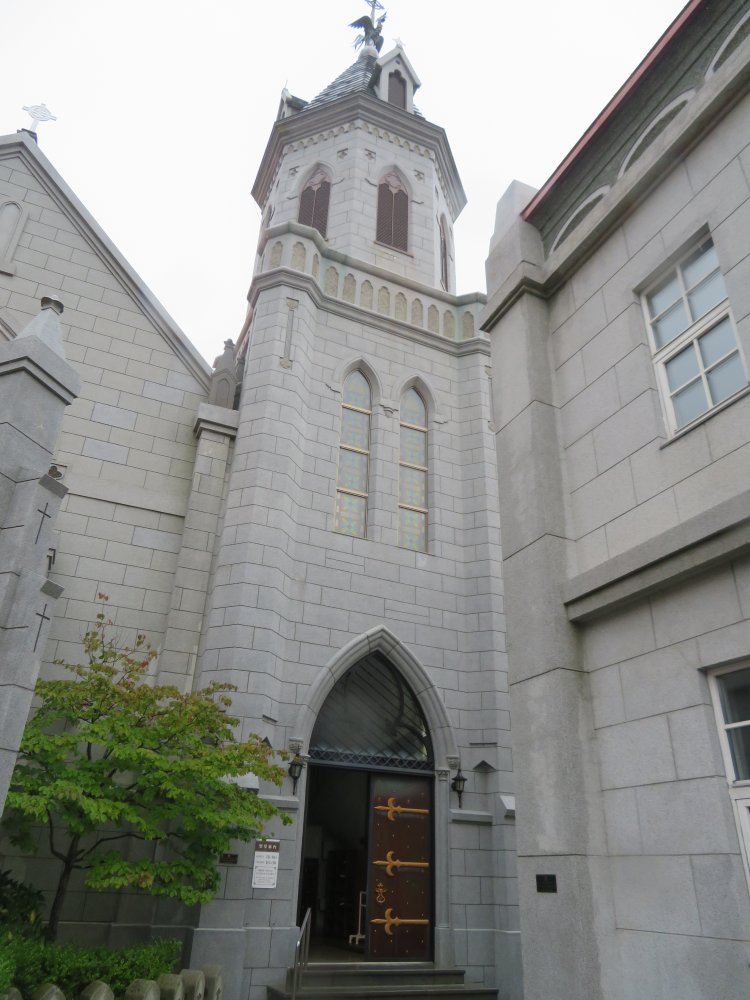
The church was one of the earliest post Tokugawa catholic churches to be founded alongside Nagasaki and Yokohama.
From the Catholic Motomachi Church we went downhill to a crossroad, made a right turn, and went past the former residence of Carl Raymon, a ham and sausage maker from Germany, who was called the missionary for the stomach. The business was acquired by a major ham manufacturing company upon Carl’s retirement in 1983 and continues to this day using Carl’s recipe. Built in 1932 it is one of the newest of the buildings comprising Hakodate's Important Preservation District for Groups of Historic Buildings. It certainly is worth stopping by to just admire the building with its ivy.
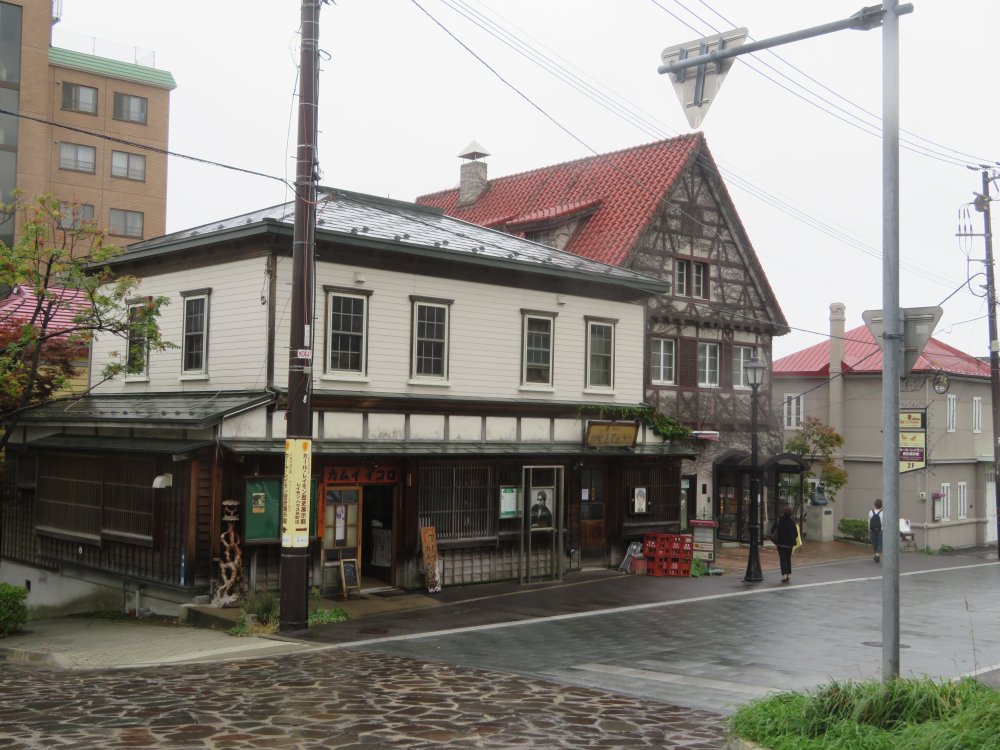
We went past the former residence of Carl Raymon, a ham and sausage maker from Germany, who was called the missionary for the stomach. Carl's residence is on the right.
We then turned right to visit the Higashihonganji Temple Hakodate Branch. I quote from the signboard outside that tells us in Japanese and English “This temple was originally a small Amida hall built in Izumisawa, a small fishing village some thirty kilometers southwest of here. In 1709 it was relocated to Hakodate and named Jogenji Temple. In 1858 it became a branch of Honganji Temple. It was repeatedly destroyed by fires and its name was changed to Higashihonganji Temple Hakodate Branch in1876. It was moved to the present location three years later. After being destroyed in the devastating fire of 1907, it was rebuilt in its traditional form with reinforced concrete in 1915 as a safeguard against further fires. It became well known as the first reinforced concrete temple built in Japan.”
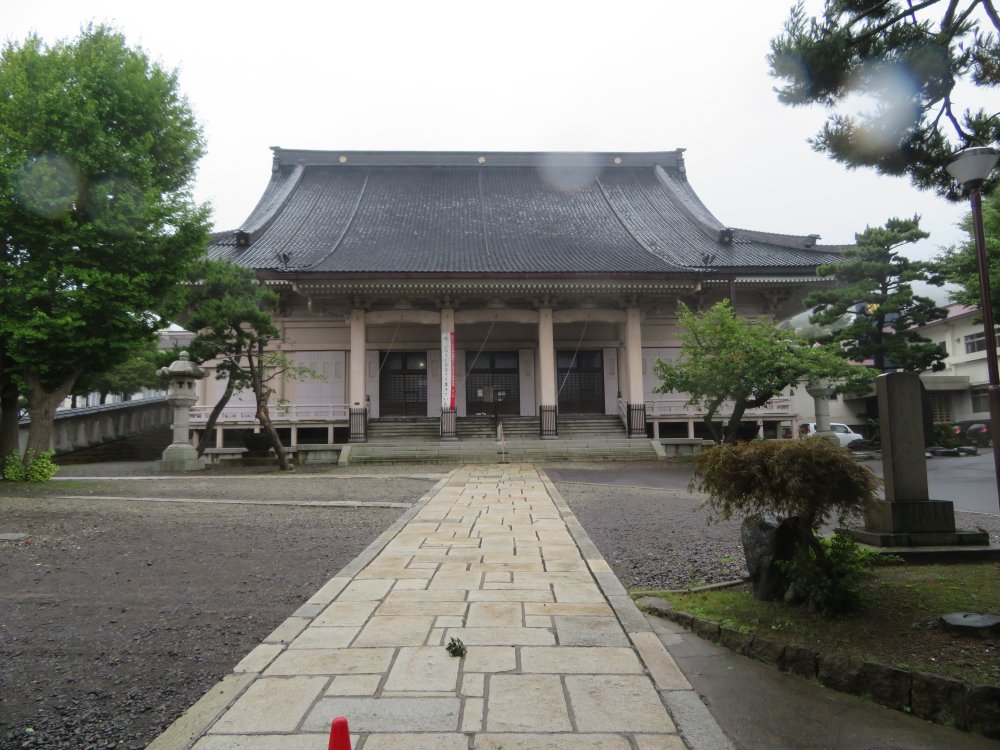
Higashihonganji Temple Hakodate Branch. After being destroyed in the devastating fire of 1907, it was rebuilt in its traditional form with reinforced concrete in 1915 as a safeguard against further fires.
From there we went downhill past Juujigai Tram Station to the south to
visit Kahei Takataya History Museum. Kahei Takataya was a merchant that
contributed to the development of Hakodate in the late 18th century to
early 19th century. Originally from Awajishima now part of Hyogo Prefecture,
His trading business was to own ships and ship goods between Osaka, Sakata
City (Yamagata Prefecture) and Hakodate. Sakata was a famous distribution
point in the Tohoku region as well as a rice collection point. He would
bring goods from the Osaka area to Sakata, purchase rice there and go north
to Hakodate to collect produce of Ezo (old name for Hokkaido) and return
to Osaka. His base in Hokkaido was in Hakodate, away from the main feudal
governmental base in Matsumae further south. In the Edo era Matumae was
the only feudal domain. Kahei opened many northern fishing routes that
led him to be abducted by the Russians but eventually becoming a mediator
to settle a crisis between Japan and Russia. The museum is privately run
and composed of two former seaweed warehouses built in 1903 and 1923 on
what was once the shipbuilding site of the Takata business. Visitors were
sparse when we visited. The collection is composed of artifacts related
to the shipping business between Osaka and Hakodate. I imagine maintaining
these types of museums must be difficult but perhaps having some volunteer
guides would be helpful to make the museum more attractive.
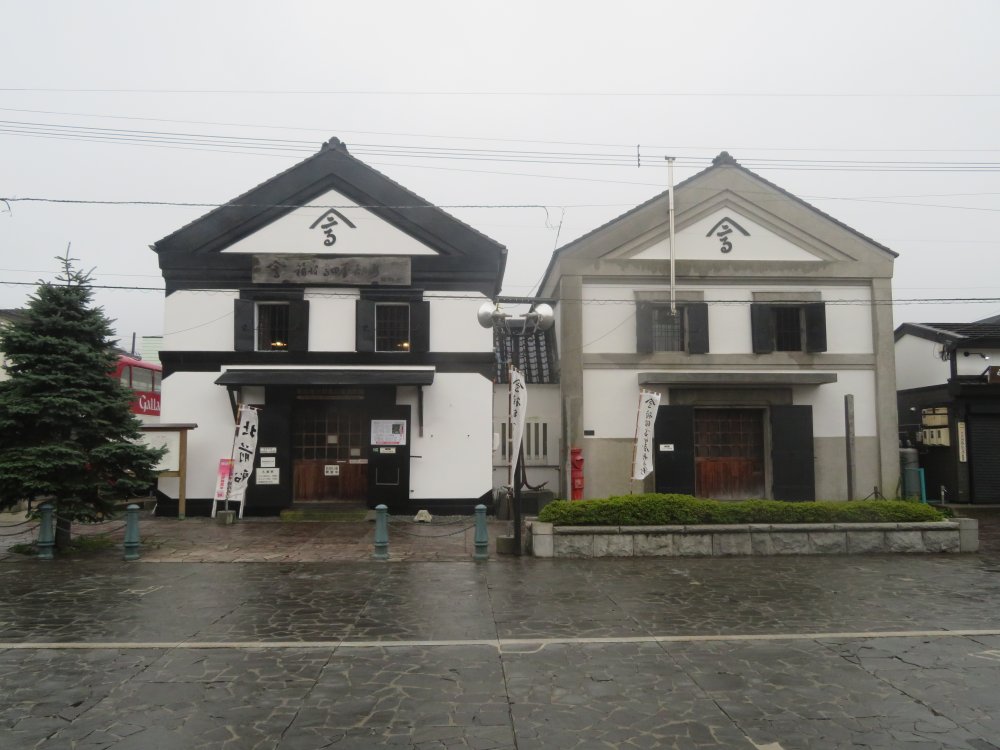
Kahei Takataya History Museum is privately run and composed of two former seaweed warehouses built in 1903 and 1923 on what was once the shipbuilding site of the Takata business.
To the north and east of the museum is the red brick warehouse area now converted to shopping centers.
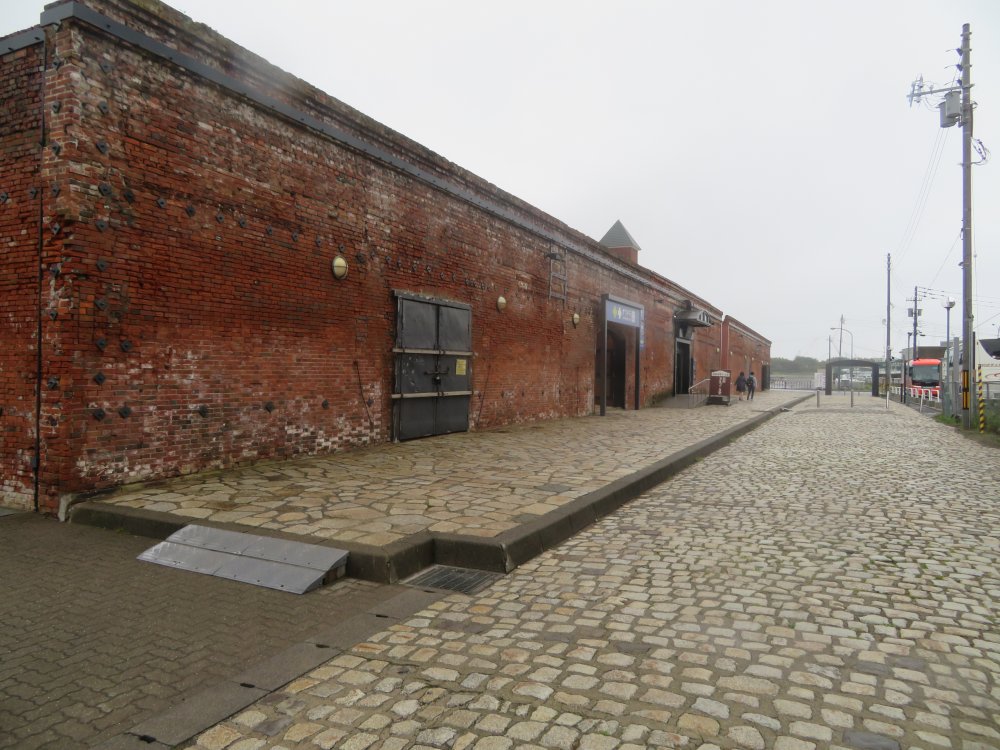
The red brick warehouses to the north and east of Kahei Takataya History Museum built around the turn of the 19th century have been converted to gift shops and restaurants.
We then took the tram from Juujigai and went east to Hakodate Dock where the tram terminates. From there uphill towards Mount Hakodate lies some more historical areas. Immediately north of Hakodate Dock tram station, we passed by the remains of Bentensaki Fort of the Tokugawa Government to guard the coast from foreign invasion.
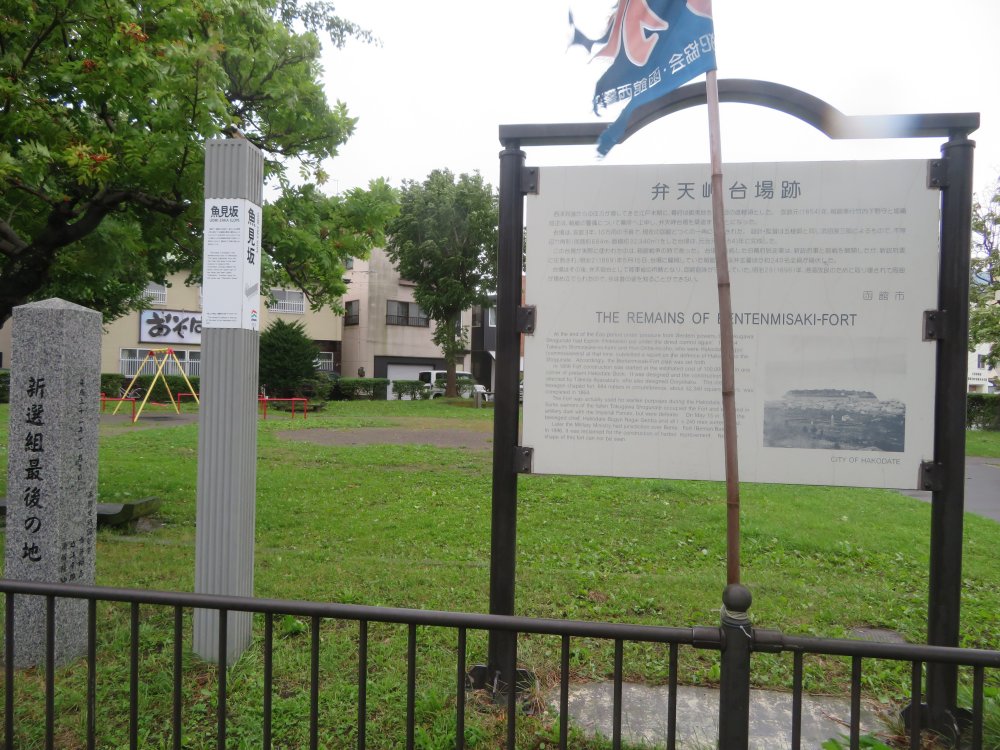
Although the sign of the fort is placed next to Hakodate Dock tram station, the actual fort was constructed on the bayside north east of this site, now part of Hakodate Dock Company's premises..
There are many Buddhist temples in this area. We first visited Shoumyouji temple of the Joudo sect. It is one of the oldest temples in Hakodate established in the Edo era and relocated to the current site in the early Meiji era following a fire. The French and British consulates were initially housed in the temple grounds after Hakodate opened its port to western countries. The temple also has memorial monuments for Kahei Takataya, Masamichi Kono who built a castle in what is now Motomachi Park and became the namesake of Hakodate (originally meaning box mansion) and the Tokugawa supporters that lost their lives in Hakodate in the final battle with the Meiji Government Army. The main temple was built using reinforced concrete in 1929.
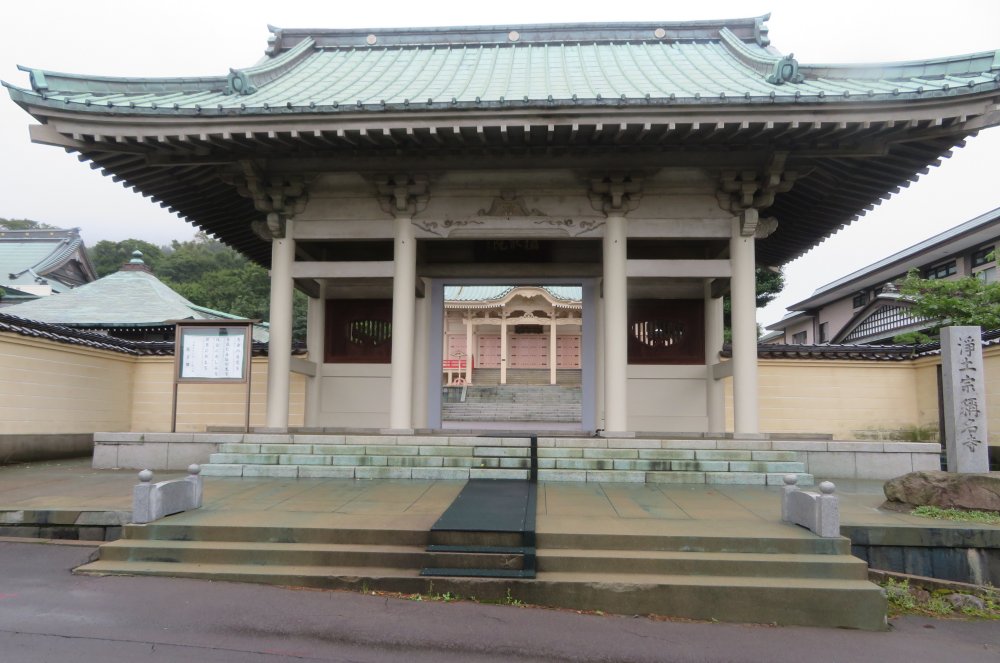
The French and British consulates were initially housed in the Shoumyouji temple grounds after Hakodate opened its port to western countries.
Moving west we came to Jitsugyouji temple of the Nichiren sect also established in the Edo era. The present wooden main temple was built in 1918. Like Shoumyouji it housed the Russian consulate in 1858 and accepted and buried the bodies of the Aizu samurais loyal to the Tokugawa shogunate who died in Hakodate (regarded as traitors). I understand that the photographers of US Admiral Commodore Perry also stayed here in 1854.
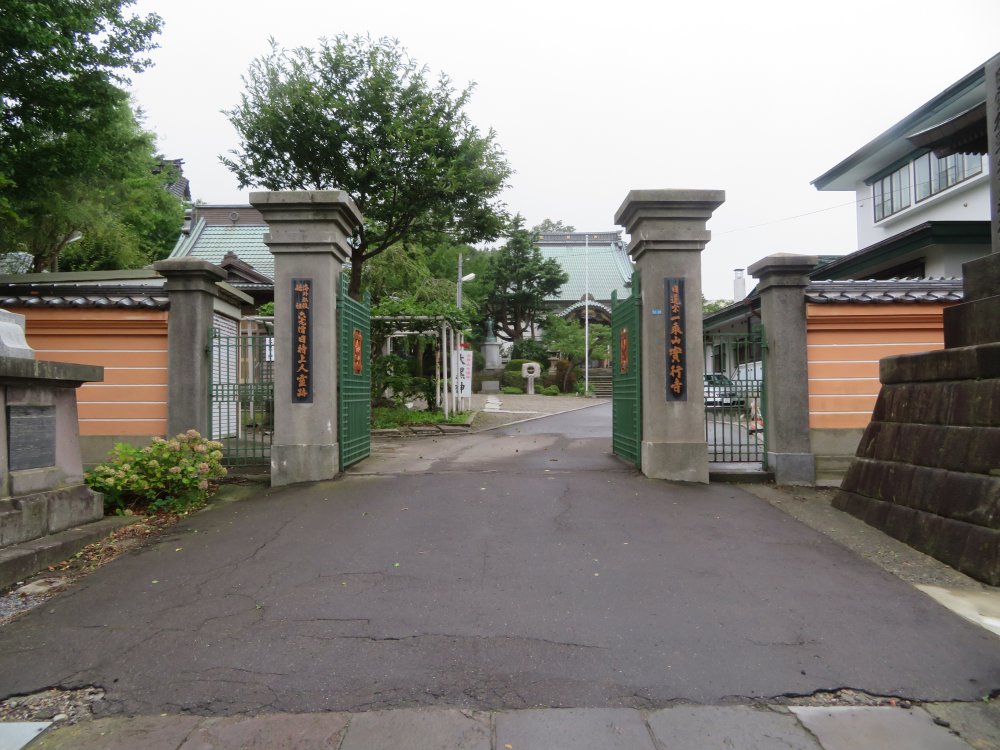
I understand that the photographers of US Admiral Commodore Perry also stayed here in 1854.
The former Russian consulate is located further west and uphill. The building built in 1908 was used as a consulate until 1944. Currently the building is owned by Hakodate City but closed to the public.
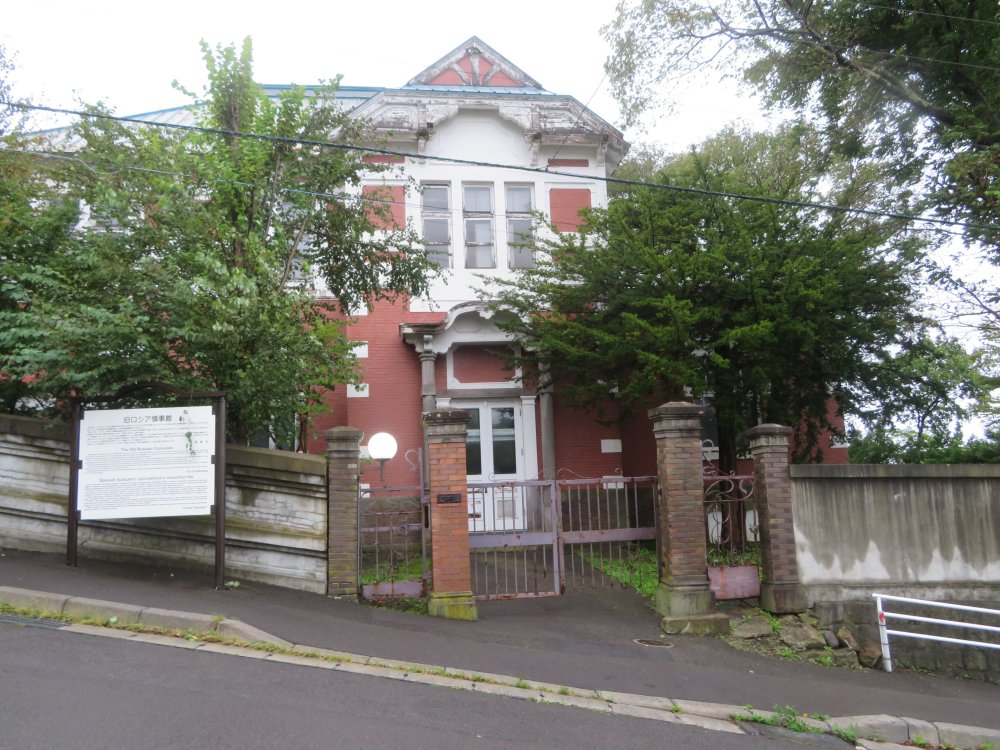
The former Russian consulate built in 1908 was used as a consulate until 1944.
Taishou-yu is a sentou (public bath) in a pretty western style building completed in 1928 and still in business. It is located in the temple district of Funamichou. I had to stop to take a photo of this pretty building while exploring the temples. Sentou is a public bath where people pay a admission fee of around 500 yen to take a bath. The baths are large enough for twenty people to bathe at the same time. Men's and Ladies' baths are segregated behind the toll booth. Before the 1960s very few houses had baths. Families were larger and it was convenient for the family to go to a sentou than having to wait for your turns. At its peak there were more than twenty thousand sentous in Japan. That has dwindled to only five thousand. I understand a lady is managing this sentou on her own which is really remarkable. The etiquette for a sentou is the same as an onsen.
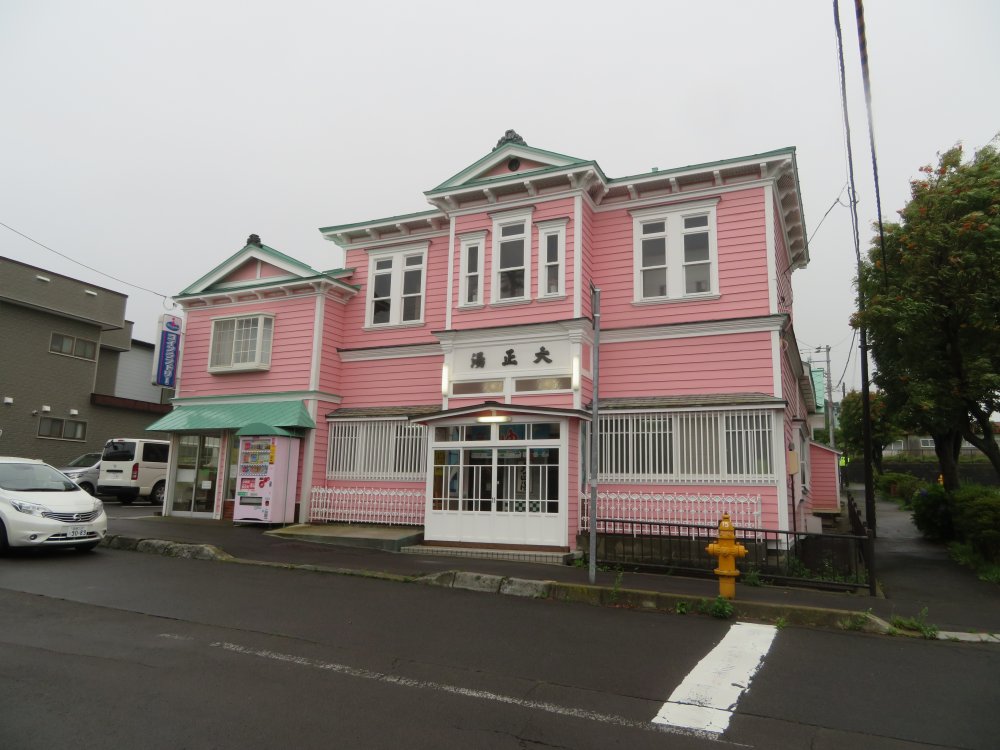
Taishou-yu, a public bath in a pretty western style building completed in 1928 and still in business.>